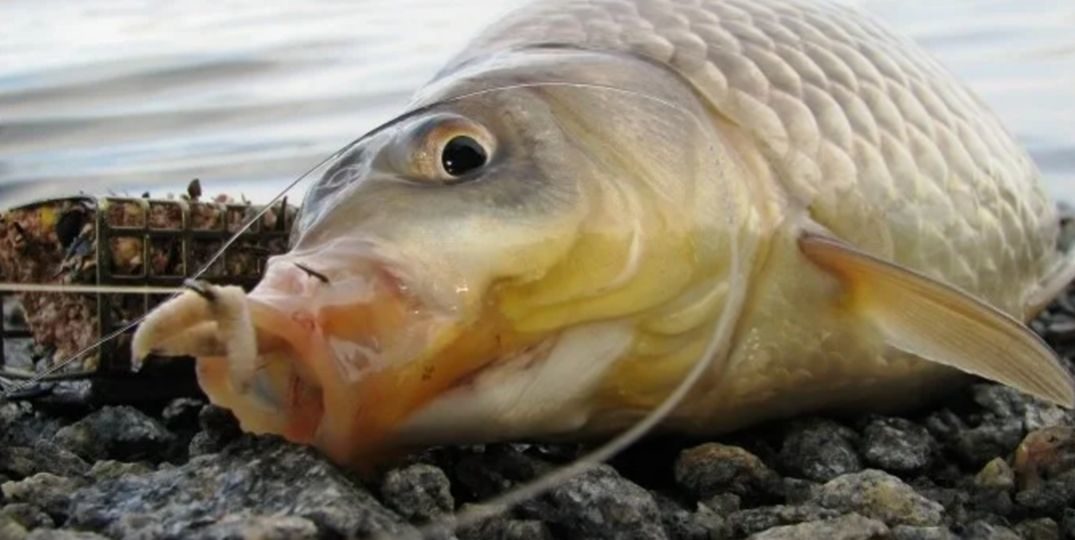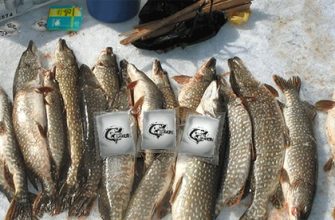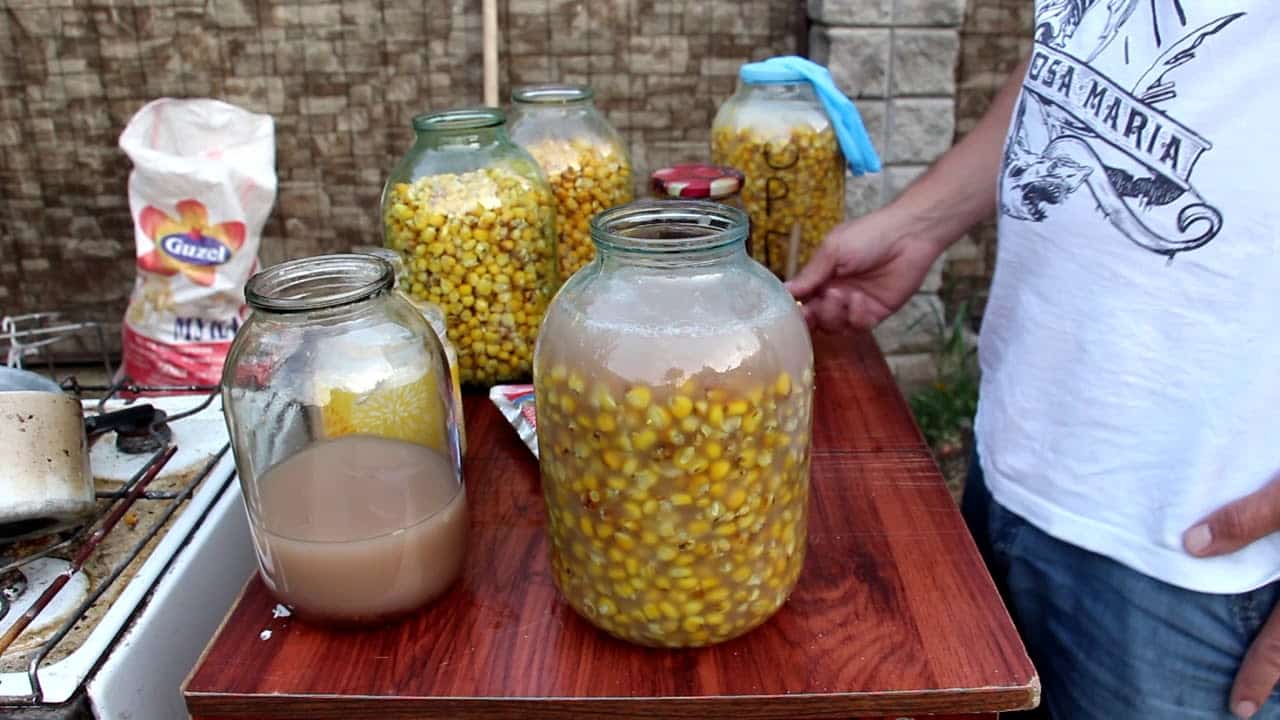Maggot is one of the most common baits for fishing. In terms of popularity, most likely, it is only overtaken by the worm. Among the advantages is that the maggots are not only very popular with fish, but also that they are clearly visible in the water. In order to use this bait most effectively, you need to know how to properly hook it onto the hook. The
- Why you need to properly hook maggots
- General rules and tips
- Ways to plant maggot on a hook – clearly
- The easy way
- How to plant a bunch of maggots
- Deep Hook Placement
- How to dress a maggot to hide the hook
- Planting to attract inactive fish
- How to properly plant maggots when fishing with a jig
- How to attach to large hooks
- Using small hooks
- Attachment as a sandwich with other attachments
- Bunching several pieces
- Typical mistakes
- Поделиться ссылкой:
Why you need to properly hook maggots
Almost all species of peaceful fish bite on this bait. However, with improper planting, the larva will not only become immobile, but also spread, leaving a skin on the hook that is indifferent to the fish. Sometimes, in order to make the maggots more attractive, flavorings are added to it. In order to fish with this bait, you need to take into account that different types of bait will attract different fish. Therefore, the most effective option must be selected taking into account the expected catch. Sometimes fishermen paint the larvae in a certain color, in the choice of which they are guided by experience.
General rules and tips
When a fisherman regularly uses maggots, he gradually understands what rules to follow when attaching it to a hook. It is best to learn them from the very beginning:
- This bait is recommended to be used only with sharp hooks.
- It should be borne in mind that with an incorrect puncture, the maggot will spread and only useless skin will remain from it.
- There is no need to hide the point of the hook in the body. The effectiveness of use will not decrease if it sticks out.
You can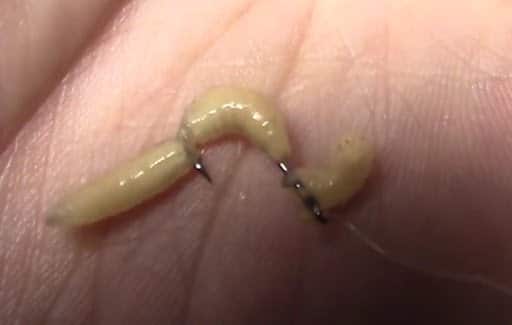
Ways to plant maggot on a hook – clearly
Various methods can be used for insertion. Usually their use depends on the type of fish and on the fishing method used.
The easy way
In this case, the hook clings to the edge of the head skin. The maggot has blunt and sharp edges. The first of them denotes the place where
How to plant a bunch of maggots
In this case, several maggots are injected at the same time. This is done in order to draw the attention of the larger fish. There can be two, three or more pieces in a bundle. For large fish, a lone bait may not arouse interest, but two or three maggots can easily attract attention. Several pieces are pricked according to the same rule as one. Only first it is necessary to move the already pricked one further along the forearm. The number of larvae depends on how large the fish you plan to catch.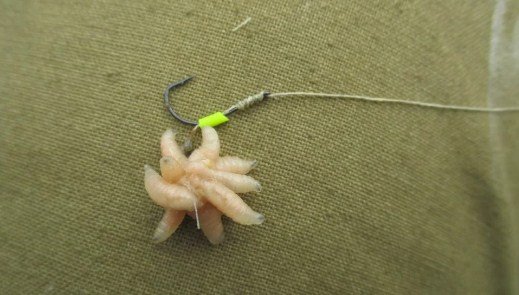
Deep Hook Placement

How to dress a maggot to hide the hook
In this method, the larva is pierced so that the tip of the hook is inside the larva. This option attracts small fish, which will not be pricked on the edge. The disadvantage of this method is the short lifetime of the maggot. This method is more suitable for use with active biting. If it is sluggish, other types of planting will be more preferable.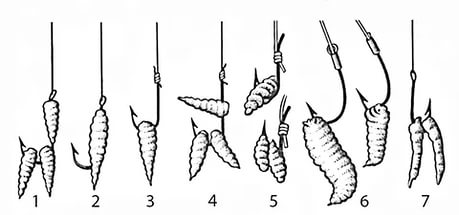
Planting to attract inactive fish
In this case, several larvae are planted on the hook behind the head. In some, the skin is cut on the back. Because of this, they begin to very actively secrete a substance that attracts fish. They can easily find the bait. It is important that one maggot remains intact. He will move on the hook, attracting fish. Those larvae whose tail has been cut off will remain motionless, but will help by giving off their scent.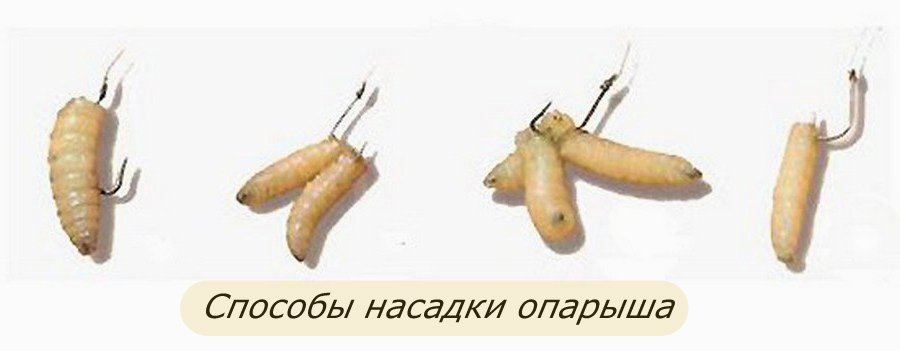
How to properly plant maggots when fishing with a jig
When attaching to a jig, the same rules apply as when using a hook. A feature of this use of maggots is that playing with a jig makes the larva move more. This allows the bait to be used longer. For example, in winter water the larva freezes and becomes inactive. Playing with a jig can stir up the maggots and attract fish better.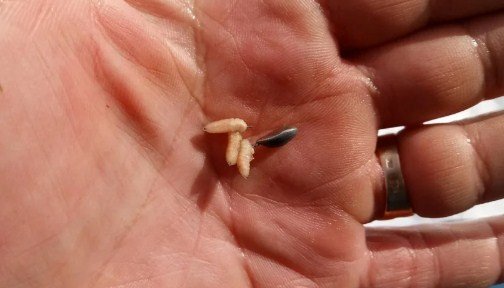
How to attach to large hooks
The use of large hooks when fishing for maggots is undesirable. This is due to the fact that they can easily pierce the maggot and cause liquid to flow out of it. They can only be used when they are sharp and beardless. In such cases, several larvae are planted on the nick to catch large fish.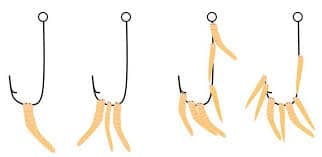
Using small hooks
Small and very sharp hooks are preferred. They are less traumatic for maggots and allow you to use all known methods of bait attachment. When attaching to small hooks, you need to pierce the larvae through the edge of the skin from the side of the thick part of the larva. When putting on a stocking, there is a high risk of fluid leakage, so you need to do this with extreme caution.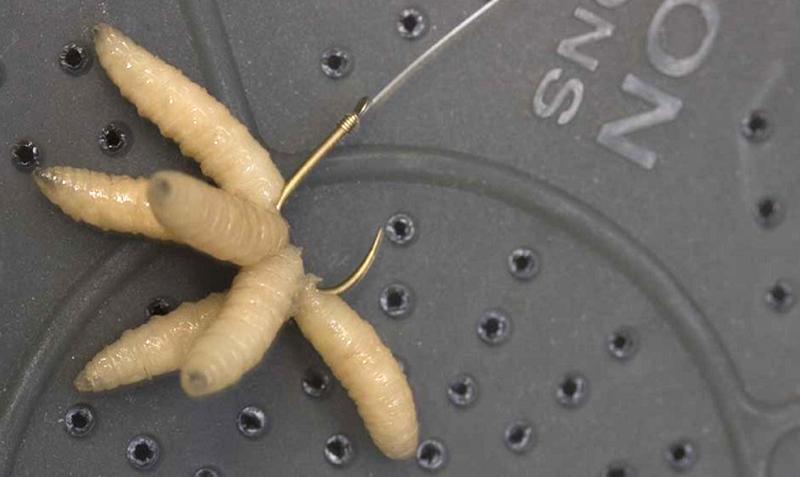
Attachment as a sandwich with other attachments
When used in conjunction with other baits, the maggots are usually first hooked to the head, then pushed back. Another bait is attached to the tip – for example, corn grain. It is also possible, for example, to first plant a maggot with a stocking, move it back, and then – bloodworms by its segment. The sandwich bait allows the most effective combination of several types of bait.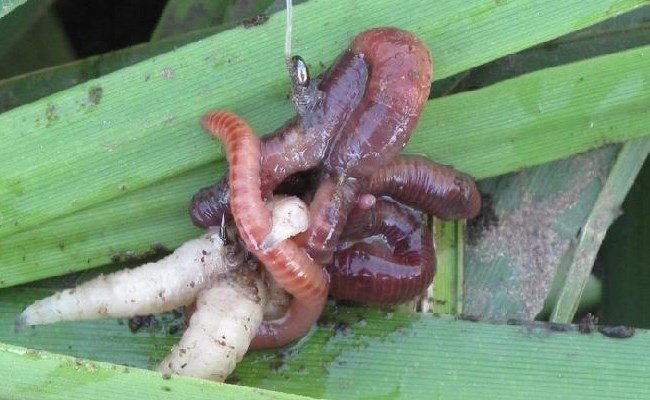
Bunching several pieces
This method is designed to attract larger fish. Sometimes it is enough to use two maggots, and for larger specimens there may be 3-5 of them. The use of 6 or more is disadvantageous as they burst quickly. If you put several larvae on the hooks at the same time, then you need to throw them carefully, otherwise the maggots can flow out and fall off the hook.
Typical mistakes
If you pass the larva through the middle of the body, it will quickly disappear. You need to prick on the hook so as to preserve the integrity of the skin. When choosing a suitable maggot, you should prefer young maggots. Their distinctive feature is the presence of a black point at the tip of the narrow part. Those who are about to become adult insects do not have such a point. When the maggot is reused, the hook cannot be threaded elsewhere. It is advisable to use the same hole as the first time.
